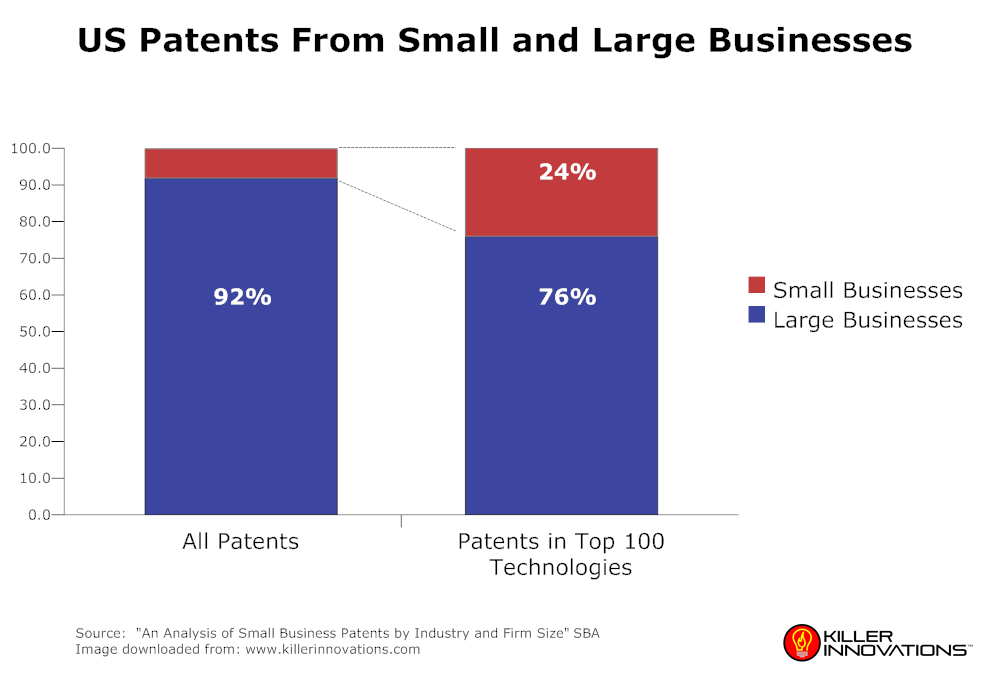What is the role of government to encourage small business innovation?
Since the beginning of time, it’s been entrepreneurs that drive the creation of innovation. True breakthroughs have been the result of an individual or small team who had an idea and the determination to see it through to fruition. In many cases, ignoring the advice of friends and the lack of what

Since the beginning of time, it's been entrepreneurs that drive the creation of innovation. True breakthroughs have been the result of an individual or small team who had an idea and the determination to see it through to fruition. In many cases, ignoring the advice of friends and the lack of what many would call standard market research/validation. While we enjoy the fruits of the rapid pace of innovations, it is the entrepreneur, slaving away alone or within a small firm, who is inventing the future. What is the role of government to encourage this small business innovation?
A set of studies by the Small Business Administration confirms this. The drive to invent is alive and well within the heart of the entrepreneur. Its surprising to learn that the smaller the business, the more patents per employee are filed. This holds true no matter the size of the business. A company with 25 employees generate more patents per employee than a company with 50, which produces more patents than a company with 100. Even in large companies the trend holds true, with corporations of 10,000 employees filing for more patents per employee than a company with 50,000 people. While it is true that larger corporations often become bureaucracies with layers of management being added as the organization grows, when a straight comparison of only individuals involved in research and development (innovation) is made, the trend still holds. Small businesses invent at a rate faster than large businesses.
When it comes to breakthrough innovation, it's not about the number of patents or the number of patents per employee but about the quality and impact of the patents.
In this case, small business lead again as a disproportionate number of patents for emerging technologies are issued to small firms To be specific, the Small Business Administration reports that, while small firms are granted only eight percent of all patents, they receive 24 percent of all patents issued in the top 100 emerging technologies. The patents issued to small business are not just broad generic patents, but are focused toward specific innovations that have the highest impact with the highest return.

The technologies most often impacted by patents issued to small firms include:
- Communications (telecommunications, internet)
- Diagnosis/Surgery/Medical Instruments
- Biotechnology
- Pharmaceuticals
- Power Systems
It's interesting to note that two of the top emerging technologies where large businesses have a 2x lead over small businesses are:
- Computer hardware
- Computer software
Whatever the underlying causes, one simple fact remains. It is the entrepreneur who blazes new ground through innovation and who raises the bar for all others. For proof, look no further than the beginnings of HP, Microsoft or Apple. In each case, two men shared a dream, and the results literally changed the world.
Its these entrepreneurs and their dreams that create economic opportunity for cities, regions and countries. So, what is the role of government to support and encourage innovation development from entrepreneurs?
- Create incentives for risk capital. Establish policies (e.g. reduced capital gains taxes) and programs (e.g. matching funding with the private sector such as the SBIR from the US government) to ensure the availability of risk capital.
- Establish incentives for small and large businesses to co-innovate together. Create a tax and IP incentive for large businesses to invest, partner and support the innovations created by small businesses. Small businesses need the size and scale of large businesses to bring their ideas to market while at the same time, large businesses need the breakthrough innovations coming from small businesses.
- Encourage entrepreneurs to invest in R&D. Eliminate the negative incentives such as the US governments AMT that wipes out any R&D tax credit for most small businesses. (read more)
- Build leverage into innovation programs. Establish incentives (reduced red tape, special infrastructure investment, hiring and training incentives, etc) to invest in common areas thereby creating an ecosystem of participants (university, investors, entrepreneurs, large businesses).
- Commit to graduating workers prepared for the creative/innovation economy. Embed creativity and innovation training into each subject taught in the classroom. Make creativity/innovation just as important as the other core subjects. What are some example of the skills that students need to learn? (read more)
If you had 10 min with a leader of your government, what would you ask they do to support small business innovation?
If you had 10 minutes with a leader of your government, what would you suggest they do to encourage small business innovation?
Source: “An Analysis of Small Business Patents by Industry and Firm Size“, Small Business Administration (SBA). November 2008



